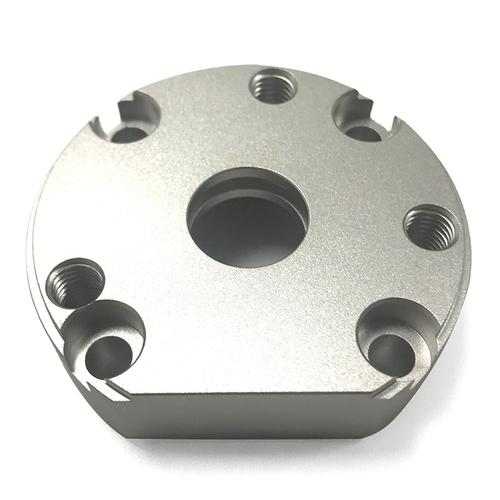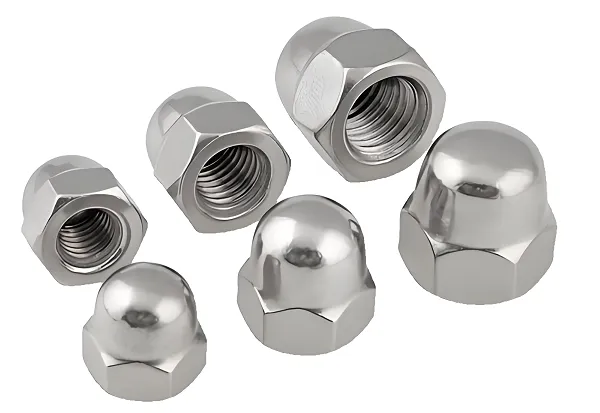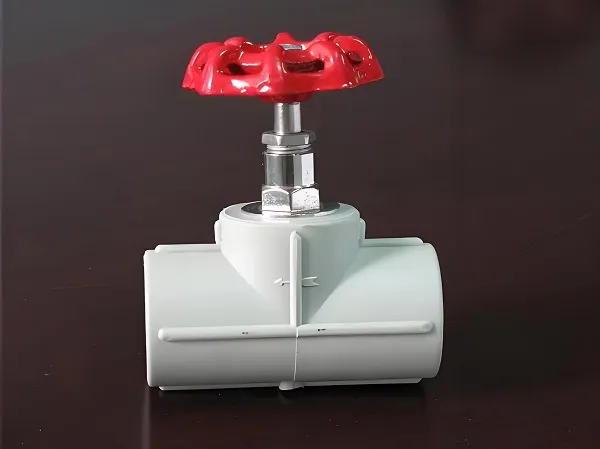
I. Introduction to Customized CNC Titanium Alloy Parts
(I) Characteristics of Titanium Alloy
Titanium alloy has the following characteristics:
High strength and low density: With a density of approximately 4.5 g/cm³, which is 60% of the density of steel, its tensile strength ranges from 686 – 1176 MPa. Components like aero – engine fan blades and automobile engine connecting rods made of titanium alloy can reduce weight and enhance performance.
Excellent corrosion resistance: Below 550°C in air, a dense titanium oxide film forms on its surface. Its corrosion resistance in various oxidizing media and strong alkalis is superior to that of most stainless steels. When used in marine ship propellers, petrochemical equipment, etc., it can extend service life, reduce costs, and minimize safety risks.
Good high – and low – temperature performance: It exhibits good mechanical properties at high temperatures. New heat – resistant titanium alloys can operate at temperatures of 550 – 600°C and are used in high – temperature components of aerospace engines. At low temperatures, its strength increases while maintaining good toughness. Low – temperature titanium alloys still have good toughness at – 253°C and are used in equipment such as cryogenic liquid storage.
High chemical reactivity: Titanium alloy has a high chemical activity. At high temperatures, it easily reacts with tools, increasing tool wear. For cutting processes, special coated tools are required, and cutting parameters need to be controlled.
(II) Advantages of CNC Machining in Customization
High – precision machining: Relying on an advanced control system and high – precision transmission mechanisms, CNC machining equipment can achieve a machining accuracy of up to ±0.001 mm. This can meet the stringent precision requirements of customized titanium alloy parts such as aero – engine blades and medical implants.
Complex – shape machining ability: Through programming control, CNC machining can accurately form complex structures like three – dimensional curved surfaces, satisfying the special shape requirements of customized titanium alloy parts in different industries. For example, in mold manufacturing, it can machine complex cavity and core structures.
High processing efficiency: The automated processing flow reduces manual intervention, and multiple processes can be completed in one clamping. When customizing titanium alloy parts in batches, it can produce quickly, shortening the production cycle. For instance, titanium alloy heat sinks in electronic devices can be processed efficiently.
Processing flexibility: Modifying the processing program allows for quick adaptation to the customization of titanium alloy parts with different design requirements. It can respond flexibly in both single – piece and small – batch customization, as well as re – processing after product design changes, facilitating rapid iteration in the product research and development stage.
II. Customized CNC Titanium Alloy Parts
Customization Process
Demand communication and design: The customer communicates with the processing team about the application scenarios, performance requirements, etc., of the parts. For example, when customizing titanium alloy blades for an aero – engine, the working conditions need to be elaborated. Subsequently, a 3D model is constructed using CAD, and CAE simulation analysis is carried out to optimize the design.
Process planning: Based on the design drawings, determine the processing process route, select equipment, tools, and fixtures, formulate cutting parameters, arrange the sequence of processing procedures, and control processing stress and deformation.
Quotation and contract signing: The processing party quotes after cost accounting, and both parties sign a processing contract after reaching an agreement on terms such as price.
Material procurement and inspection: Purchase titanium alloy materials that meet the standards from regular suppliers. After arrival, strictly inspect the materials using various methods.
Processing and manufacturing: Install the qualified materials on the CNC machine tool and process according to the program. Monitor in real – time and adjust parameters, and implement quality control measures.
Quality inspection and delivery: After processing, comprehensively inspect the parts using professional equipment. Compare the results to ensure they are qualified. Process the qualified parts and then deliver them. After – sales service can be provided according to the customer’s requirements.
Processing Technology
Turning: When turning titanium alloy, select high – performance carbide tools with added elements such as tantalum and niobium. The cutting speed is 50 – 100 m/min, the feed rate is 0.1 – 0.3 mm/r, and the cutting depth is 0.5 – 2 mm. Use high – pressure cooling to reduce the cutting temperature and improve the machining surface quality.
Milling: Adopt down – milling, select indexable carbide milling cutters. The cutting speed is 80 – 150 m/min, the feed speed is 50 – 200 mm/min, and the cutting depth is 0.5 – 3 mm. For parts with complex curved surfaces, five – axis milling can be used to improve accuracy and efficiency.
Drilling: Use cobalt – containing high – speed steel or carbide drill bits. Grind the tip angle to 130° – 140°. The cutting speed is 15 – 30 m/min, the feed rate is 0.1 – 0.2 mm/r. Adopt peck – drilling to prevent the drill bit from breaking and improve the processing quality.
Grinding: Select a cubic boron nitride grinding wheel with a ceramic bond. The grinding speed is 30 – 40 m/s, the feed rate is 0.01 – 0.05 mm/r, and the grinding depth is 0.01 – 0.03 mm. Make full use of the grinding fluid to prevent workpiece surface burns and ensure quality.
Processing Flow
Design and programming: Use CAD software to build a 3D model based on the customer’s part design requirements. Then use CAM software to generate the tool path and processing program. During programming, consider tool selection, cutting parameter setting, tool path planning, etc. For example, when processing complex titanium alloy aerospace parts, accurate planning and parameter optimization are required.
Material preparation: Select titanium alloy materials that meet the requirements. Check their size, shape, and quality. Pre – process the materials as required for processing, such as cutting large – sized plates.
Clamping and positioning: Clamp the titanium alloy material on the workbench of the CNC machine tool. Select appropriate fixtures to ensure no displacement. Determine the precise position of the workpiece through tool setting, such as using high – precision special fixtures for processing titanium alloy engine blades.
Rough machining: Carry out rough machining according to the programmed path and parameters to quickly remove most of the allowance. Pay attention to cutting force and heat to prevent material deformation and excessive tool wear. For example, use large – diameter tools for rough machining of titanium alloy molds.
Semi – finishing: After rough machining, perform semi – finishing to reduce the allowance. Adjust the tool and cutting parameters to improve accuracy, making the dimensions closer to the design requirements.
Finishing: Use a small cutting depth and feed rate for finishing to achieve the final design dimensions and surface roughness requirements. Closely monitor the processing state and adjust parameters in a timely manner, such as when processing high – precision titanium alloy medical device parts.
Quality inspection: After processing, use measuring instruments and other equipment to comprehensively inspect the parts. Analyze the reasons for unqualified parts and rework or scrap them to ensure the quality of the delivered parts.
Processing Precautions
Tool selection and wear monitoring: Since titanium alloy cutting is prone to high temperatures and tool wear, select carbide tools. Regularly check for wear and replace the tools in a timely manner, such as by observing the cutting edge to determine replacement, to ensure processing quality.
Cutting parameter control: Strictly control the cutting speed, feed rate, and cutting depth. Reasonably adjust these parameters according to the part’s shape and size through experiments or empirical data to avoid problems and ensure stable and efficient processing.
Cooling and lubrication: Processing titanium alloy generates a large amount of heat, so sufficient cooling and lubrication are required. Use coolants and cutting fluids with extreme – pressure additives to ensure they cover the cutting area and carry away heat and chips.
Preventing vibration and resonance: Titanium alloy processing is prone to vibration and resonance, which affect processing accuracy and quality. Use high – quality tools, appropriate parameters, a stable machine tool, and clamping equipment. Optimize the tool shape, increase rigidity, and adjust parameters to reduce vibration.
Processing environment control: Keep the processing environment clean and stable. Avoid impurities from entering. Control the workshop temperature at 20 ± 2°C and humidity at 40% – 60% to reduce the environmental impact on processing accuracy.
III. Functions of CNC Titanium Alloy Parts
Aerospace Field
In the aerospace field, customized CNC titanium alloy parts are widely used in aircraft fuselage structures and engine components. For example, the Boeing 787 airliner uses titanium alloy to manufacture fuselage frames, skins, etc., taking advantage of its high – strength and low – density properties to ensure strength and reduce weight. Components such as engine fan blades use titanium alloy to meet the strength and stability requirements in high – temperature environments, ensuring the stable operation of the engine.
Medical Field
In the medical field, customized CNC titanium alloy parts are used in implantable medical devices and surgical instruments. Implants like artificial joints utilize its biocompatibility and high strength to reduce rejection and ensure long – term stable operation. Surgical instruments take advantage of its corrosion – resistant property to ensure the smooth progress of surgeries.
Automotive Manufacturing Field
In the automotive manufacturing field, customized CNC titanium alloy parts are applied to engine components and suspension systems. Engine valves, etc., utilize its high strength and low density to improve power performance and fuel economy. Suspension system springs, etc., utilize its high strength and good fatigue performance to ensure handling stability and comfort while reducing weight.
Chemical Industry Field
In the chemical industry field, customized CNC titanium alloy parts are used in equipment such as reaction kettles, heat exchangers, and pipelines. Reaction kettles utilize their corrosion resistance to ensure stable operation. Heat exchangers rely on good thermal conductivity and corrosion resistance to ensure heat – exchange efficiency and service life. Pipelines use corrosion resistance to ensure safe transportation.
Offshore Engineering Field
In the offshore engineering field, customized CNC titanium alloy parts are applied to ship structures, offshore platforms, and underwater equipment. Ship propellers, etc., utilize corrosion resistance to extend service life. Offshore platform support structures, etc., utilize high strength and corrosion resistance to ensure safety. Underwater equipment casings, etc., utilize corrosion resistance and high strength to ensure normal operation and reliability.
IV. Batch Processing of CNC Titanium Alloy Parts
Equipment Selection and Maintenance
When batch – processing CNC titanium alloy parts, select machine tools with high rigidity, high precision, and good stability, such as the DMG MORI five – axis machining center from Germany. Also, pay attention to daily maintenance, regularly check the wear of key components, replace vulnerable parts in a timely manner, and regularly detect and calibrate the accuracy to ensure the equipment is in its best condition.
Tool Management
Titanium alloy processing causes significant tool wear, so a complete management system needs to be established. Reasonably select tool materials, such as high – performance carbide tools with a high cobalt content, optimize geometric parameters, formulate a tool – life management strategy, and replace tools in a timely manner. Additionally, classify and manage tools and create an inventory file.
Processing Parameter Optimization
To improve efficiency and quality, processing parameters need to be optimized. Use methods like orthogonal experiments to study the influence laws of parameters, use monitoring technology to obtain real – time data and adjust parameters, standardize the optimized parameters, and establish a parameter library.
Quality Control and Inspection
In batch processing, quality control and inspection are crucial. Establish a complete system, and formulate standards and processes for each link. Use in – line inspection during processing and sampling inspection for finished products. Use professional equipment for comprehensive inspection, and use the SPC method to analyze data to ensure stable quality.
V. CNC Titanium Alloy Precision Parts
Processing Technology: Besides conventional processing techniques like turning and milling, special processing technologies such as electrical discharge machining (EDM) and electrochemical machining (ECM) are often employed. EDM erodes the workpiece through pulsed discharge and is suitable for complex molds and precision parts, such as the cooling holes of aero – engine turbine blades. ECM uses the principle of electrochemical anodic dissolution and is used for processing large – area surfaces, such as titanium alloy integral blisks. High – speed cutting technology is also widely used in the processing of CNC titanium alloy precision parts, which can reduce cutting force, decrease deformation, and improve accuracy and surface quality.
Function: CNC titanium alloy precision parts are used for key components with extremely high requirements for accuracy and performance. For example, in high – end medical equipment (such as the superconducting magnet support structure of an MRI device), their high – strength and other properties are utilized to ensure the stable operation of the magnet and improve imaging accuracy. In semiconductor manufacturing equipment (such as the precision moving parts of a lithography machine), high precision and high stability are relied on to ensure the positioning accuracy of the equipment and meet the strict requirements of chip manufacturing.
Advantages: CNC titanium alloy precision parts have obvious advantages. In terms of accuracy, the dimensional accuracy can reach ±0.001 mm or even higher, and the shape and position accuracy can also be strictly controlled. The surface quality is excellent, with a roughness Ra of less than 0.1 μm, which can improve the wear resistance of parts. They can also ensure performance consistency and are suitable for batch – producing precision parts with strict performance requirements, such as titanium alloy precision structural parts in high – end electronic products.
VI. Customized CNC Titanium Alloy Special – shaped Fittings
How to Process
Design phase: With the help of CAD/CAM software, construct an accurate 3D model according to the customer’s requirements and generate the tool path and processing program.
Material preparation: Select titanium alloy materials that meet the standards. After arrival, strictly inspect them through methods such as spectral analysis and tensile tests.
Conventional processing technologies: Coordinate the use of turning, milling, drilling, grinding, etc. For example, when processing fittings with complex curved surfaces and internal structures, each process has a clear division of labor.
Special processing technologies: For fittings with special shapes and high – precision requirements, adopt EDM, ECM, etc.
Processing Difficulties
Titanium alloy characteristics: It has high strength and hardness, requiring a large cutting force, which increases the load on tools and machine tools. Its low thermal conductivity leads to heat concentration, affecting tool life and workpiece accuracy. It has a strong affinity with tool materials, easily causing adhesion and built – up edge.
Shape of special – shaped fittings: They have complex structures such as irregular curved surfaces, deep cavities, and thin walls, which require high – level processing technologies and equipment. Clamping and positioning are difficult, and special fixtures are needed.
Application Fields
Aerospace: Used for manufacturing aero – engine components and fuselage structural parts, such as fan blades and connectors.
Medical: Applied to implantable medical devices, such as hip prostheses and scoliosis correction devices.
Automotive Manufacturing: Used in engine components, suspension systems, and braking systems, such as valves and control arms.
Offshore Engineering: Manufacture ship propellers, rudder blades, offshore platform support structures, and underwater equipment casings.
VII. Common Questions about Customized CNC Titanium Alloy Parts
(I) Customization Cycle
Question: What factors affect the customization cycle?
Answer: It is affected by factors such as part complexity, precision requirements, processing technology difficulty, and order quantity.
Question: How long is the customization cycle for different types of parts?
Answer: Simple titanium alloy parts like regular shaft – type or block – type parts can be delivered within 1 – 2 weeks. Complex special – shaped fittings like aero – engine blades may have a customization cycle of up to 2 – 3 months.
Question: What should be noted about the customization cycle for batch orders?
Answer: For batch orders, production scheduling and equipment processing capacity also need to be considered. The cycle will be determined in communication with the customer, and the progress will be followed up.
(II) Measures to Ensure Processing Accuracy
Question: From which aspects can processing accuracy be ensured?
Answer: Select high – precision CNC machine tools and regularly detect and calibrate their accuracy. Choose high – performance tool materials and optimize geometric parameters. During the processing, adopt technologies such as in – line inspection, real – time monitoring, and cutting force and power monitoring, and adjust parameters according to feedback to ensure accuracy.
(III) Titanium Alloy Material Selection
Question: What are the common titanium alloys?
Answer: Common titanium alloys include TA1, TA2, and TC4.
Question: What are their characteristics and application scenarios respectively?
Answer: TA1 is industrial pure titanium with good plasticity and corrosion resistance but low strength. It is suitable for parts with low strength requirements but high requirements for corrosion resistance and formability. TA2 has slightly higher strength and is used for corrosion – resistant parts that require a certain strength. TC4 is widely used, with high strength, good toughness and corrosion resistance, and good welding and processing performance. It is used for key components in the aerospace and medical fields.
Question: What kind of help will be provided to customers in material selection?
Answer: Material selection suggestions will be provided to customers based on factors such as the part’s usage environment.
(IV) Factors Affecting Processing Costs
Question: What factors affect processing costs?
Answer: It is affected by material costs (titanium alloy is expensive, and prices vary greatly depending on grades and specifications), processing technology complexity (complex processes require advanced equipment, professional personnel, and long processing times, increasing costs), processing precision requirements (high – precision requirements demand high – level equipment, tools, and processes, with more inspections and adjustments, increasing costs), equipment usage costs (high – precision machine tools are expensive, and costs such as depreciation, maintenance, and energy consumption are allocated), and labor costs (professional personnel have high salaries).
Question: How to handle cost issues in quotation?
Answer: Costs will be calculated in detail during quotation.






